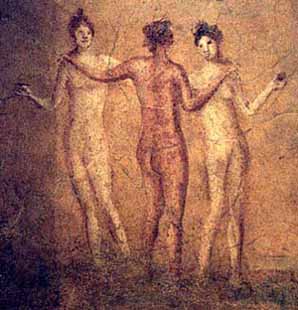
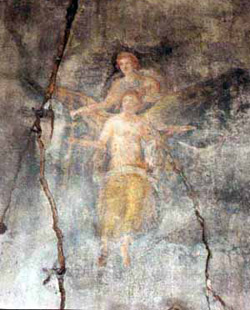 I’ve had a yearning for a faded sort of beauty. Wanting to satisfy my need, I googled angels, caves and frescos and found two roman frescos from Italy that I particularly like. One is of a Winged Figure and the other, The Three Graces.
I’ve had a yearning for a faded sort of beauty. Wanting to satisfy my need, I googled angels, caves and frescos and found two roman frescos from Italy that I particularly like. One is of a Winged Figure and the other, The Three Graces.
It’s the ethereal beauty of the frescos that I like, somewhat wabi sabi?
But there are frescos closer to home, one in a church just down the road, St Peter’s in Preston Park. There are several other medieval churches close to Brighton that have well kept twelfth century wall paintings, these are at Clayton, Coombes and Hardham. Recently, I visited them and took photos.
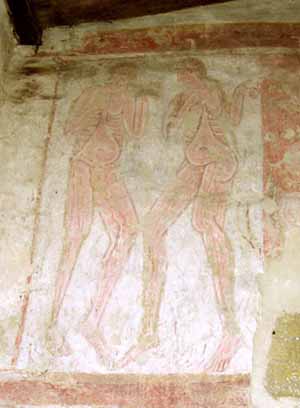
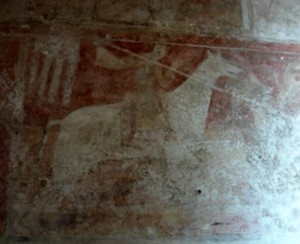
I love the red ochre used in the wall paintings, it reminds me of cave paintings. Some of these walls have faded ghosts: here’s St George fighting the infidel – an apparition supposedly seen at the Battle of Antioch in 1098. Also Adam and Eve, looking a bit raw. The walls must have witnessed countless people over the centuries pondering in the pews.
Below are photos showing Christ in Majesty over the chancel of Clayton church and a humerous painting of a man holding up the arch at Coombes church.
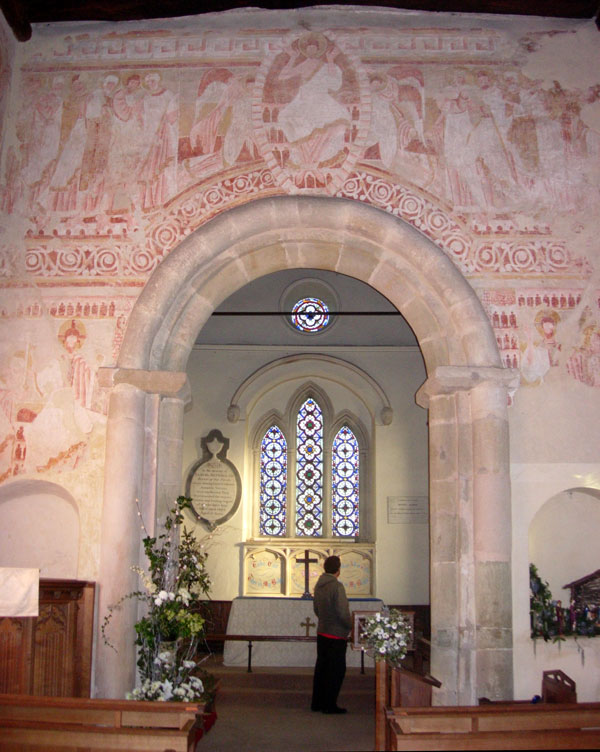
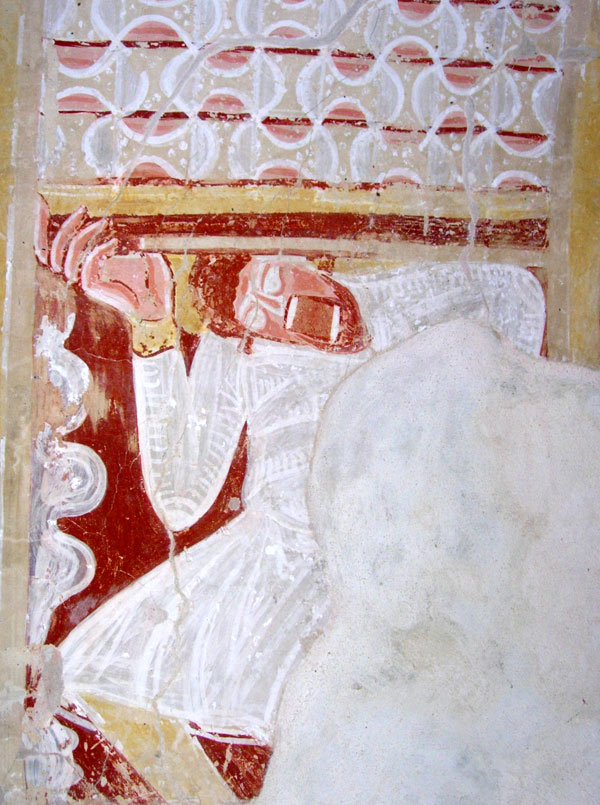
In the mood for church art, I made a trip to Watts Chapel in Compton, Surrey. It is a gem of a place. Designed in the nineteenth century by Mary Watts, the wife of George Frederic Watts, a well known Victorian artist, the chapel is of many styles including Art Nouveau, Celtic, Romanesque and Egyptian. It is shaped like a Byzantine Greek Cross and features many decorative mouldings and friezes.
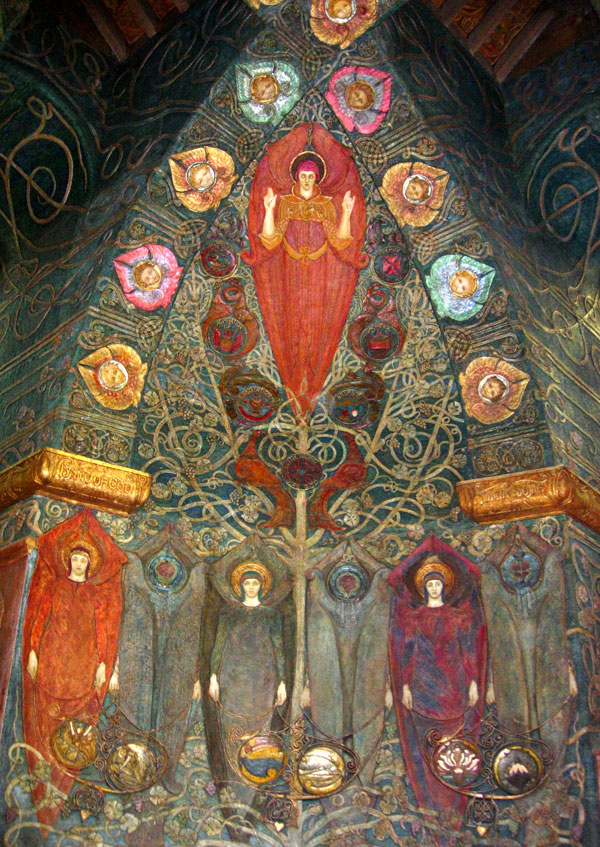
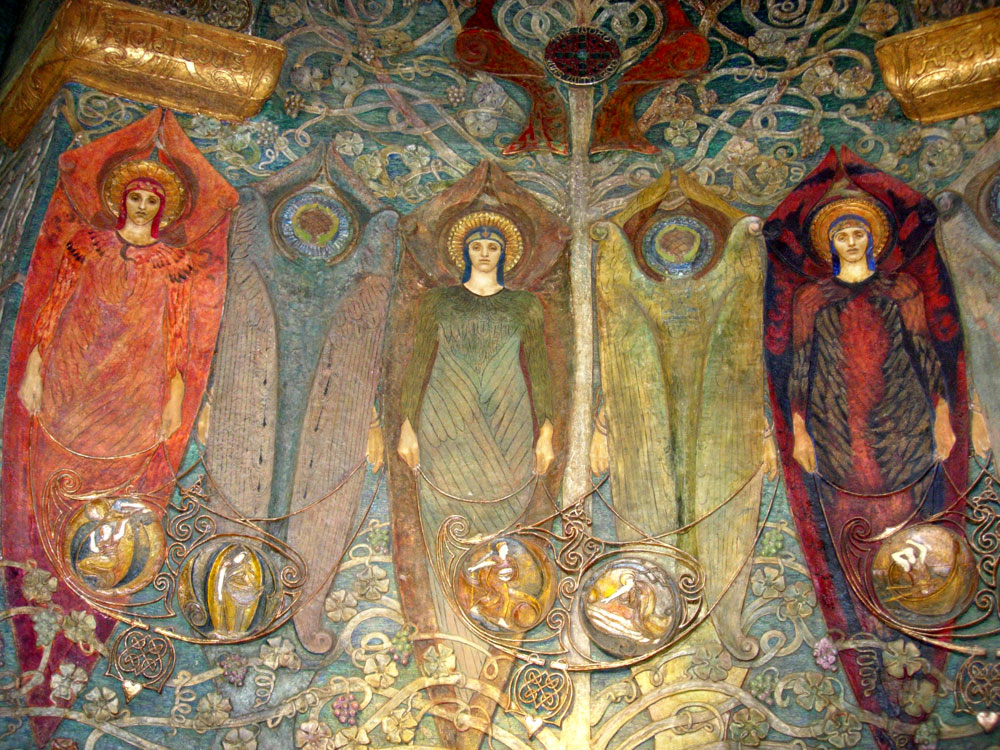
The whole chapel is embelished with symbolism; birds, flying fish, boats, shells, bells, cherubs etc. The River of Life and The Tree of Life – symbols I love – feature inside and out. Over the entrance arch there are alternating faces; some look up in hope and others down, in sympathy. One of my photos here shows a corbel with a labyrinth that symbolises The Way, which is taken from the saying of Jesus, “I am the way, the truth and the life” (St John 14:6). Venturing inside the chapel is like entering a hidden, secret garden, where one is surrounded by angels or winged messengers. Some of the angels face outwards “carrying the symbol of light” while others face inwards “carrying the symbol of darkness”. I love the intricate vegetation of The Tree of Life weaving a mystical garment out of the whole. Click on the small photo of the chapel interior to see a larger version.
After all this, I couldn’t help thinking about the film, The English Patient and the scene in which the soldier Kip takes Hana to a cathedral and shows her the frescos there. Here it is:
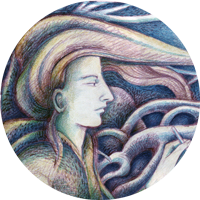
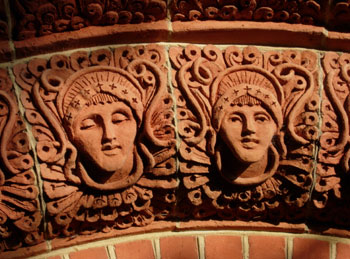
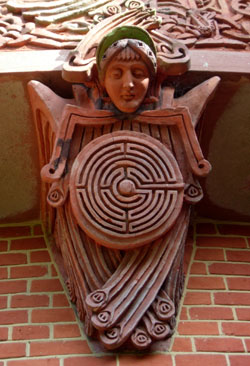
Oh my gosh…. Watts Chapel is heavenly ….. those magical colours. I wpould sooo like to visit. I love all of those styles that you mentioned. Is this far from where you live ? How lucky to have such a place close enough for you to visit. I really want to go there ! The English patient is a fav movie of mine as well. I must get it out and watch it again now that you have mentioned those frescoes. You always do the BEST blogs Alexi, thank you.
WOW. I was looking at craft sites and found yours just now. I have never seen the English Patient, but after watching this clip I HAVE to! I have got chills and goosebumps from the music, the look on her beautiful face as the art just comes alive for her, and from the sheer joy that the man feels from giving her this experience. Lord! I wanted to hug him myself after that! LOL Thanks so much for this–it’s inspiring!
[…] like how the figures are in natural surroundings. They remind me of the art of Watts Chapel (see Churches, Chapels and Frescoes) and were created around the same time, the time of the British Art Nouveau […]